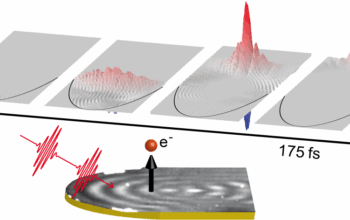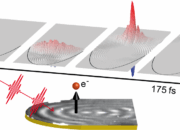As the global climate crisis intensifies, conventional cooling methods, typically reliant on electricity, face increasing scrutiny due to their substantial energy consumption and resultant greenhouse gas emissions. A groundbreaking approach to passive cooling, entitled “Sunlight Slayer,” offers a revolutionary paradigm shift within the realm of thermal management. This device achieves significant cooling without consuming any power. By harnessing the natural principles of heat absorption and radiation, this technology presents an elegant solution to the ever-pressing demands of sustainable living.
The Sunlight Slayer operates through an intricate boilerplate of thermodynamics concepts. Central to its operation is the phenomenon of radiative cooling. This process occurs when surfaces emit thermal infrared radiation, dissipating heat into the atmosphere, a fundamental principle exploited by the device. An effectively engineered surface material is paramount; it must possess high emissivity in the infrared spectrum while simultaneously reflecting solar radiation. The confluence of these two properties ensures that the device remains cool under direct sunlight, leveraging the temperature differential between the surface and its cooler atmospheric surroundings to induce a net cooling effect.
An array of materials, including advanced metamaterials and engineered polymers, can be employed in the construction of the Sunlight Slayer. Metamaterials, organized in a specific microstructure, are essential for engineering a surface that reflects visible and ultraviolet light while maximizing infrared emissivity. This selectively engineered surface architecture not only enhances efficiency but also enables the device to achieve temperatures significantly below ambient air temperature. The importance of material selection cannot be overstated, as it directly influences the overall efficacy and practicality of the cooling device.
This innovation extends beyond mere theoretical applications. Studies have presented compelling empirical evidence showcasing the efficacy of the Sunlight Slayer in various environmental conditions. Real-world tests demonstrate the ability of the device to cool air in proximity by several degrees Celsius, offering an immediate and tangible benefit to residential and commercial buildings alike. In larger scoped applications, the technology could potentially mitigate the urban heat island effect prevalent in metropolitan areas, contributing to improved air quality and overall public health. Such benefits are invaluable as cities grapple with rising temperatures and increased energy demands.
Additionally, the economic implications of the Sunlight Slayer are worthy of examination. By eliminating the reliance on powered cooling systems, households and businesses could see substantial reductions in utility costs. The return on investment is significant when considering the savings accrued over time, particularly in regions characterized by extreme thermal conditions. Furthermore, the implementation of this technology could enable developing nations lacking robust power infrastructure to combat heat without exacerbating energy poverty. It transforms cooling from a luxury afforded by a select few into an accessible necessity for all.
Societal impact is yet another domain where the Sunlight Slayer could instigate transformative change. As climate change exacerbates heatwaves, the health risks associated with extreme temperatures become increasingly dire. Vulnerable populations, including the elderly and those with pre-existing health conditions, may find respite through this passive cooling approach. Enhanced thermal comfort can lead to a decline in heat-related illnesses and mortality, fostering a healthier and more resilient populace.
The versatility of the Sunlight Slayer also warrants discussion. Not confined to passive air cooling, this device can be adapted for diverse applications. For instance, in agricultural settings, it could serve as an effective cooling solution for crops, mitigating heat stress and promoting more robust yields. Similarly, in storage facilities, it can maintain optimal temperatures for perishable goods. The adaptability of this technology extends its reach across various sectors, underscoring its potential to promote sustainability across multiple spheres of human activity.
The engineering challenges associated with scaling up the production of the Sunlight Slayer must also be addressed. While prototypes show immense promise, the transition to mass production necessitates rigorous engineering standards and quality control measures. Issues such as durability, cost-effectiveness, and integration with existing systems require careful consideration to ensure the technology’s viability in the mainstream market. Collaborative efforts among interdisciplinary teams encompassing materials scientists, engineers, and environmentalists will be crucial in overcoming these hurdles.
The gradual incorporation of the Sunlight Slayer into our societal fabric presents both opportunities and challenges. Public awareness and acceptance of passive cooling technologies will play a critical role in their success. Educational initiatives aimed at informing communities about the benefits and operation of such devices can enhance adoption rates and support a broader cultural shift towards sustainability. As technological advancements precipitate a movement towards greener living, facilitating an environment conducive to innovation and cooperation will be paramount.
Ultimately, the Sunlight Slayer epitomizes the convergence of science and practical application, challenging conventional paradigms of thermal management. Through careful design, empirical validation, and public advocacy, it holds the potential to reshape cooling methodologies, offering sustainable solutions to combat increasing global temperatures. As society searches for ways to mitigate the deleterious effects of climate change, the Sunlight Slayer stands as a beacon of innovation and hope, illuminating paths toward a cooler, more environmentally harmonious future.








